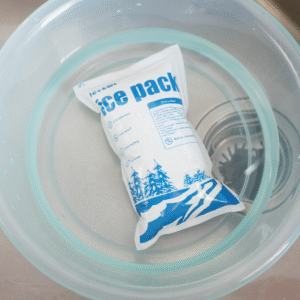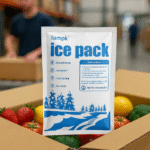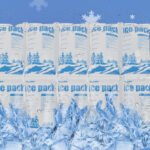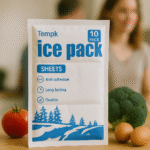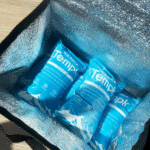How to Pack Fish in Dry Ice the Right Way (2025)
If you’re asking how to pack fish in dry ice, here’s the short answer: use a thick insulated shipper, vent the package, layer dry ice above and below the fish, and mark “Dry Ice/UN1845” with net weight. Plan 5–10 lb per 24 heures, add a buffer day, and follow the 2.5 kg airline limit for baggage. You’ll keep seafood solid and compliant on trips up to 72 heures.
-
Gear that works: the exact cooler, doublures, and labels for how to pack fish in dry ice on 24–72h routes
-
Right amount of dry ice: a quick planner for long‑haul shipments and hot weather
-
Airline and courier compliance: practical UN1845 labeling and venting that pass checks
-
Emballage étape par étape: a repeatable method that prevents leaks, odors, and thaw
-
Trends for 2025: how better insulation and low‑cost loggers cut dry ice weight
What gear do you need to pack fish in dry ice?
Short list: insulated shipper (≥1–2″ walls), rigid outer box, food‑safe vacuum bags, absorbent pad, vapor barrier liner, glace carbonique (blocks or large pellets), void fill, insulated gloves, et “Dry Ice/UN1845 + net kg” marks on the outside.
Why it works: thick foam or VIP panels slow heat gain; vacuum bags block odors and freezer burn; the liner stops moisture from softening the carton; ventilation prevents CO₂ pressure buildup. Start fish fully frozen, or fresh fish at ~32°F (0°C). These small choices keep temperatures stable and reduce claims.
Dry ice vs. gel packs—when to use each for seafood?
Fin de compte: pour how to pack fish in dry ice on multi‑day, frozen lanes, use dry ice as the primary coolant. Gel packs are great as support (smoother warm‑up curve) or for chilled‑not‑frozen livraisons. If you must keep fish unfrozen, buffer the dry ice with cardboard and use less.
| Packout Type | Dry Ice per 24h | Typical Duration | Ce que cela signifie pour vous |
|---|---|---|---|
| EPS foam 1–1.5″ | 8–12 lb | 24–48 h | Budget friendly; add buffer in summer. |
| EPS foam 2″ | 6–10 lb | 48–72 h | Good for weekends if pre‑chilled. |
| VIP panels | 4–8 lb | 72 h+ | Prime; best for hot routes or long customs. |
Practical tips you can apply today
-
Pré-Chill tout: poisson, expéditeur, and void fill.
-
Haut + bottom layers: put some dry ice under and more on top; cold CO₂ sinks.
-
Avoid airtight seals: leave a vent path; never shrink‑wrap the lid.
-
Write net kg: regulators expect kilograms on the label.
Cas réel: 20 lb of salmon in a 2″ foam shipper with 18 lb of dry ice (split top/bottom) arrived after ~40 hours at −12 °C by data logger—no thaw and no leakage.
How much dry ice do you need to pack fish in dry ice for 24–72 hours?
Règle: 5–10 lb per 24 heures, then add a buffer day for delays. Use the higher end for pellets, thin insulation, frequent openings, or hot weather.
Why this range works: sublimation depends on surface area, isolation, and ambient heat. Thicker foam or VIP slows loss; minimizing voids reduces convection. Planning with a baseline plus buffer keeps loads frozen even when routes slip.
Quick Dry‑Ice Planner (copy/paste)
Comment pack fish in dry ice step by step?
Essentials: Freeze or chill first, double‑bag, line the box, dry ice bottom, fish in the middle, dry ice top, fill voids, close ventilé, alors mark UN1845 + Kg net.
Details that prevent problems: use 3–4 mil vacuum pouches; add a thin cardboard sheet between dry ice and fish to prevent surface burn; keep labels on one panel («Dioxyde de glace sèche / carbone, solide,” UN1845, Kg net); wear insulated gloves and eye protection.
Step‑by‑step checklist
-
Pre‑condition fish (frozen, or fresh at ~32°F/0°C).
-
Vacuum‑seal portions; double‑bag oily species.
-
Line the shipper with absorbent + vapor barrier; add a corrugated pad.
-
Add lower dry‑ice layer (Les blocs durent plus longtemps que les pastilles).
-
Load fish flat with minimal air gaps.
-
Add upper dry‑ice layer for downward cold flow.
-
Fill voids with kraft/bubble; avoid movement.
-
Close vented—never airtight; secure the outer carton.
-
Étiquette: “Dry Ice,” “UN1845,” and Kg net on the same face.
Can you pack fish in dry ice for airline travel?
Yes—within limits. Passengers may carry jusqu'à 2.5 kg (5.5 kg) of dry ice per person per package in vented packaging with airline approval. Marque «Dioxyde de glace sèche / carbone, solide,” UN1845, Kg net. Use a rigid, leak‑resistant cooler inside a bag or box, and keep the lid not airtight.
Airport mini‑checklist
-
Fish frozen/vacuum‑sealed; no free water (“wet ice”).
-
Rigid cooler + outer carton; leave a vent path.
-
Total dry ice ≤2.5 kg; declare at check‑in.
Comment pack fish in dry ice for courier shipping (FedEx/UPS/USPS)?
Markings and venting win approvals. Mettre Nom d'expédition approprié, UN1845, Classe 9 marque, et Kg net on a single vertical panel; do pas seal the package airtight. Choose the shortest viable service—less time means less dry ice.
Documentation quick‑reference
-
Proper name: «Glace sèche» ou «Dioxyde de carbone, solid.”
-
UN number: UN1845; Classe: 9 (Miscellaneous).
-
Net dry ice weight in kg on the box and (if applicable) on the airway bill.
-
Addresses: shipper and consignee clearly printed.
2025 trends: how to pack fish in dry ice better with new tech
What’s new in 2025: updated airline acceptance checklists emphasize net‑kg markings et label placement, alors que VIP panels et low‑cost loggers reduce dry‑ice loads and prove temperature control. Consumer demand for “dock‑to‑door in two days” is pushing reusable insulation and smarter routing.
Latest developments at a glance
-
Smarter monitoring: pocket‑size loggers give arrival proof and speed claims.
-
Insulation upgrades: VIP/lightweight hybrids achieve the same hold time with less ice.
-
Operational rigor: carriers scrutinize venting and UN1845 marks more consistently.
Perspicacité du marché: seafood exporters using verified logs and clear UN1845 labeling report fewer delays and credits. Optimizing insulation often saves more weight (and cost) than over‑icing.
FAQ: how to pack fish in dry ice
Q1. How much dry ice for a 48‑hour shipment?
Plan 16–24 lb for 1–1.5″ EPS, 12–18 lb for 2″ EPS, ou 10–16 lb for VIP, plus ~5 lb buffer.
Q2. Can I tape a cooler shut to “trap the cold”?
Non. Airtight is unsafe. Dry ice vents CO₂; packages must release gas.
Q3. What temperatures should I target?
Keep frais fish near 32°F (0°C); ensure ≤40°F (4.4°C) in handling. Keep frozen fish rock solid.
Q4. Can I combine gel packs with dry ice?
Oui. Gel packs smooth temperature swings but won’t keep fish frozen alone.
Q5. What goes on the label?
**«Dioxyde de glace sèche / carbone, solide,” UN1845, and net kilograms of dry ice—clearly visible on one face.
Résumé: how to pack fish in dry ice like a pro
Remember the four moves: start cold, build a ventilé insulated package, allocate 5–10 lb per day plus buffer, and mark UN1845 + Kg net. Layer dry ice top and bottom, fill voids, and pick the shortest service that fits your lane. Follow these basics and your seafood arrives frozen, faire le ménage, and compliant.
Étapes suivantes (CTA):
-
Use the Quick Dry‑Ice Planner above for your route.
-
Pick a 2″ EPS or VIP shipper for 48–72h lanes.
-
Télécharger a printable UN1845/Class 9 panel and packout checklist.
-
Talk to Tempk for a lane‑specific blueprint and SOP.
À propos du tempk
We design practical cold‑chain playbooks and packaging for seafood and specialty foods. Our tested 24–72h shippers use smart vent paths, moisture control, and right‑sized dry ice to keep payloads solid while cutting waste. We back deployments with SOPs, UN1845 label sets, and acceptance checklists that reduce claims and speed hand‑offs.
Ready to optimize a route? Get a free dry‑ice sizing plan and packout template for your next shipment.






